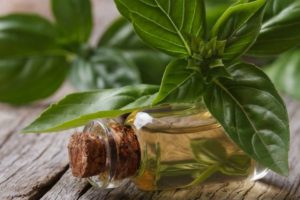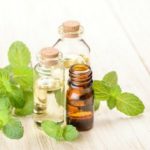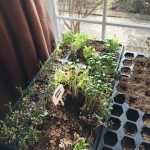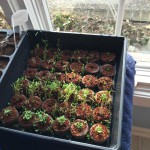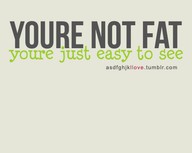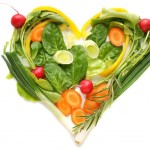- Follow Us!
- Subscribe via EmailJoin 2,323 other subscribers
- Categories
- Latest Twitter PostsFetch Tweets: Could not authenticate you. Code: 32
- Login
Pharmacy to Farmacy
Many of you may know Erin– the fabulous Pharm D that worked in our office a few years back. Erin is a phenomenal gal and we embarked on the journey into natural medicine around the same time. As we both share a real passion for nutrition and natural remedies, I wanted to introduce you to her wealth of knowledge about essential oils. I am using them and really loving all the benefits — so here is a little about ERIN! 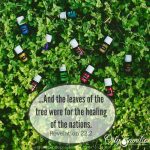
How a Pharmacist Got Started With Essential Oils
Well, hello! Allow me to introduce myself. I am a classically trained, Western medicine pharmacist AND a natural wellness enthusiast. “How can this be?” you may ask. Aren’t Western medicine practitioners and natural wellness practitioners supposed to be diametrically opposed to each other? I used to think that too. I admit, I am a “natural” skeptic {pun intended}. My training has taught me that if there is not a double-blinded, placebo-controlled trial to back up a claim, it is merely unsubstantiated mumbo-jumbo. So what changed my mind? Perhaps it was the subtle (and not so subtle) ways my body started telling me I’m not as young as I used to be. Or, perhaps, it was the desire to keep my family healthy without the use of synthetic chemicals. Becoming a parent certainly increased my desire to find the best and most natural ways to do things. Whatever the reason, I developed a desire to find a better way to achieve and maintain health and wellness. So, I went back to my old standbys: research and experience.
Western vs. Natural Medicine Approaches
Over the years, what I have learned, both through research and personal experience, is that while Western medicine is great at using a variety of medical and surgical interventions to keep you alive, it is not so great at keeping you from needing those interventions in the first place. Western medicine shines in treatment more so than in prevention. If you think of your wellness like a horizontal line, with health and vitality above the line and sickness and disease below the line, in Western medicine we wait until you have fallen way below the wellness line before we do anything. By that point you are in trouble. You have a disease, so we prescribe a medication or surgical intervention that helps to manage that disease. The problem is most medications that are prescribed for chronic conditions do not provide a cure, but are used to mitigating the symptoms. They do not get to the underlying cause, and they do not bring you back above the wellness line. Not to mention, most medications come with a variety of toxic and adverse effects that then also have to be managed. Does that mean that I think we should never use Western medicine approaches? Absolutely not! Western medicine has its place, and offers us many tools in our wellness tool belt to utilize. However, I think we can all agree, it would be ideal if we could utilize these tools less.
What if there were tools to help us stay above the wellness line? This is where natural medicine shines. By supporting your body to do what it was made to do in the first place, natural medicine approaches prevent much of the need for Western interventions. Our bodies are amazing creations that were made to be healthy. Given the right environment and the right building blocks, most of the time our bodies will be healthy. The problem is that in today’s world we are surrounded by things that tear down our bodies instead of support them. We eat junk, we breathe in junk, we apply junk to our skin, we don’t get enough sleep or exercise, and we are constantly STRESSED OUT! It’s no wonder all sorts of disease rates are climbing.
A Better Way
What if there was a better way? What if we gave our bodies an environment in which they could thrive and the building blocks with which to heal? What would that look like?
- We would put nourishing foods into our body. Not overly processed, chemical laden junk, but REAL food. Hippocrates knew what he was talking about when he said “let thy food be thy medicine, and medicine be thy food”.
- We would stop breathing in toxins. True, you cannot always help the air quality where you live, but you can stop making it worse. Quit smoking and get rid of the toxins in your air. Did you know formaldehyde is just one of a number of chemicals commonly used in scented candles and air fresheners?!? So stop “freshening” your air with toxins.
- We would clean up our skin care products. Check out your product labels. Do some research into the dangers of ingredients like parabens, phthalates, triclosan, artificial dyes, and many others. Don’t be fooled, anything you put on your skin is absorbed into your body!
- We would start moving more, resting well, and stressing less!
I know that seems like a pretty tall order, and no one is going to be perfect 100% of the time, but every step you take in the right direction is a step toward wellness, and that is a worthy goal!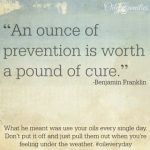
Essential Oils as a Tool for Wellness
So where do essential oils come in? For me, adding in essential oils was another step in my path toward natural wellness. When I was first presented with the idea of using essential oils for wellness, guess what, I was skeptical of that too. My pharmacist brain kicked into gear and wanted to dismiss the idea. After months of pondering, I finally gave in and got my Young Living Premium Starter Kit. And then it sat on my counter…for weeks. Finally, my old friends, research and experience won. I opened up those little bottles and started using them. The more I used them, the better I felt, so I would research more, and then use them more, and then feel better, and then research, and then use them, and then…well, you get the idea. My biggest “Ah Ha!” moment in using essential oils was when I finally realized essential oils are NOT like medicine, they are like FOOD! The properties and constituents in essential oils that make them so amazing do their job by supporting your body to do what it was intended to do. Just like food, they give your body the building blocks to heal and stay above the wellness line. Just like I would not go a day without eating or drinking, there is now not a single day that goes by when I am not using my essential oils. Yes, there are specific oils that work better for specific purposes, but so long as you have high quality, therapeutic grade essential oils, such as those provided by Young Living, just use them! Once you understand a few common sense safety issues (like don’t put them in your eyes or ears- duh!), unlike medications that can cause serious problems if used at the wrong time in the wrong way, using Young Living Essential oils is always going to support your body in a positive way.
How do I Use My Young Living Essential Oils
We have been using our Young Living Essential Oils EVERY DAY for well over 2 years now! They can be inhaled, applied topically, and most can even be ingested. Here are just a few examples…
- Peace and Calming, Lavender, or Cedarwood for a restful night’s sleep
- DiGize or peppermint for digestion
- Thieves to support our immune systems
- Peppermint, Copaiba, or PanAway for muscles, joints, and ligaments
- Stress Away when life gets too crazy (or just because it smells AMAZING!)
- Lavender and Frankincense in our skin care
- Progessence Plus, Clary Sage, or Idaho Blue Spruce for hormone balance
- Grapefruit to support metabolism
- Purification and Lemon in our household cleaning
If you go down our previous list about what a “better way” would look like for improving your health, literally every item on that list has been touched by Young Living Essential Oils in our home.
Why I Love Young Living Essential Oils
I could write another post about why, after much research, I chose Young Living for my family and why it is the only brand I recommend if you are looking for actual wellness benefits and not just pretty smells from essential oils. I will save those many details for another post. For now, please believe me when I say there is a HUGE difference between Young Living’s therapeutic grade essential oils and almost any other oil on the market, so, Buyer Beware! If you would like to do a little of your own research, you can start by learning more about Young Living’s commitment to purity and quality through their unique Seed to Seal® process. For more information and videos describing this process check it out at www.seedtoseal.com.
Ready to Stay Above the Wellness Line?
If any of this peaks your interest, I would love to tell you more. Come check out more information or message me through www.facebook.com/EssentiallyErin or email me directly at erinruth@sbcglobal.net. I’ll be waiting for you!
To get your own Premium Starter Kit, go to http://tinyurl.com/ErinArkins1. The Premium Start Kit is by far the best deal to get you started on your oily journey, and by signing up through my link you will have access to member only essential oil education and FREE reference material as a gift from me. Getting my kit was the best decision I made for my family’s health and wellness! I am excited to help you on your journey as well!
Blessings and wellness to you and yours,
Erin
Tara’s Story
Tara’s Story
When I turned 30 years old I weighed in at 348lbs; clothes were getting harder to find and more expensive, and my life was getting difficult to manage. When going out to eat we had to have a table because I could not comfortably sit in a booth, my stomach hit the steering wheel when I drove, and at family gatherings, I often sat on the floor in the corner so no one had to navigate around me. My depression and anxiety were getting worse and, as a previous nationally competing athlete, I was disgusted with myself and how I was allowing my health, and weight, box in my life.
After attempting every fad diet plan, ‘cleanse’ and losing a few pounds only to gain them, and some of their friends, back, I was giving up. Then Dr. Angie had me watch a TedTalks video about a high fat, low carb diet and provided me with literature to go through. However, I knew after the video that this high fat, low carb (or Keto) diet change would be manageable. I still got to eat cheese and enjoy meat!
After 6 months, I have lost 60lbs and continue to lose weight even though I am not super strict all the time. When I want something, I have it, but in moderation. I do not beat myself up for slip-ups, or cheat meals. Not only am I am able to sit in booths again, I have started to enjoy shopping, my mental state is better than ever and my body is starting to feel like my own again. My weight no longer controls me.
I still have a long way to go, but I know I will get there.
This is the video I shared with Tara— There are many more that explain the theory of the ketogenic/ low carb/high fat diet.
I love seeing patients make changes that don’t involve pharmaceuticals!!
Share any of your own weight loss adventures in the comments below– and please call or message me if you want more info! You can contact me at the office (317) 217-2626, email at doc@angelamd.com or contact me thru my Angelamd Facebook page.
Congrats Tara! You are such and inspiration and I am so excited to continue to watch all your health improvements!
Breastfeeding Tips
Here’s a different topic for today regarding breastfeeding! We all know how important the gut microbiome is and breastfeeding is a natural, inexpensive way to help your baby’s gut get all those good bacteria! Natalie Michele the author of maternityathome.com was gracious enough to share this with us.
Preparation for Breastfeeding – What You Need to Do
Expecting mothers are known to prep and prepare for the months leading up to birth. From painting and decorating the nursery to cleaning late into the night, women feel the natural instinct to prepare for the birth of their next child. One area that some women forget to prepare is breastfeeding.
Years ago, women were told to toughen up their nipples before birth. Some of the methods can send chills through your spine. Thankfully, there is no reason to attempt to make your nipples tougher. Any attempt won’t give you the results you hoped. There are some things you do want to do to prepare for breastfeeding.
1. Specify on Your Birth Plan: If you took the time to write a birth plan, you need to specify that you desire no artificial nipples be given to your baby. The plan should mention no pacifiers, sugar water or formula unless medically indicated or approved by you. Make sure to note that any artificial feeding is given through an oral syringe. Keeping all of these items away from your baby will reduce the chance of nipple confusion.
2. Read and Get Support: Breastfeeding may be natural, but it can be complicated at times. In an age when breastfeeding isn’t the norm in some areas, lack of information and support is one of the top reasons mothers end up not breastfeeding their child. Attend a local LLL group. Reach out to other moms in your area. Pick up a few breastfeeding books to get to know the basics. Also, find a great lactation consultant in your area who will make a hospital visit and a home visit after birth.
3. Get All Needed Items: Before your baby comes, you need to stock up on needed items. You should have at least two or three supportive nursing bras. A nursing bra for sleep is also a great purchase. You will need nursing pads, either disposable or reusable. Lanolin or nipple cream is required for sore nipples.
You may want to look into some easy, button up pajamas for easy breastfeeding those first few weeks. Many mothers like breastfeeding tank tops to make breastfeeding in public easier and discreet. You may want a nursing cover as well.
Mothers can purchase several other items for breastfeeding. A breast pump is essential if you plan to go back to work or leave your baby for any extended period. Using a breast pump means you will need breast milk storage bags and bottles. A nursing pillow can make those long nursing sessions easier on the arms and back. Also, a sling and rocking chair are some beneficial, but not needed, items.
4. Find a Supportive Pediatrician: Not all pediatricians are knowledgeable about breastfeeding. To ensure you have a successful breastfeeding relationship, it is essential for you to have a pediatrician who follows the American Academy of Pediatrics recommendations for breastfeeding. Ideally, they will have an extensive knowledge on breastfeeding as well.
5. Take a Breastfeeding Class: If you are feeling nervous about breastfeeding, you may want to check out a local breastfeeding class. Your local WIC office, hospital or La Leche League may offer them. This is a great place to meet other breastfeeding or pregnant mothers in the area. You can feel safe here asking all of those questions that are nagging you every day.
6. Know Your Baby’s Nourishment Needs: The first week of life is one of the hardest for breastfeeding mothers. There is no way to know just how much breast milk your infant is drinking. It is easy to doubt your ability to breastfeed successfully.
It can take up to five days before your milk fully comes in. Waiting can cause anxiety and doubt; mothers believe they are starving their new baby. Remember, your breast makes colostrum at the beginning, which is essential for a healthy breastfeeding relationship.
Colostrum is full of nourishment for your child. In the beginning, your child’s stomach is the size of a marble. Over the next few days, they will gradually need more. The best way to know if they are getting enough milk is to check their wet and dirty diapers. Bring your baby to breast as frequently as possible to bring in your milk.
7. Expect Discomfort: Not every mother is going to experience the excruciating pain cited by some mothers, but every mother is going to have some discomfort while breastfeeding. Your nipples are in for a significant change. Use nipple cream diligently after each feeding. Give them air as needed.
The most important way to keep your nipples from cracking is to check your baby’s latch each feeding to make sure it is correct. A bad latch can cause cracking and bleeding, which is a terrible way to start your breastfeeding relationship.
Once you have your new baby, leave all of those formula samples at home. During the late night feedings, you don’t want to have them in your house. You will be tempted to give up and use formula instead. So remember, as a new mother you are more than capable of breastfeeding your baby as long as you prepare ahead of time.
Check out more info all tailored to mom’s and addressing concerns regarding pregnancy all the way thru infancy
— Check out Natalie’s site——http://maternityathome.com
Getting Started with Essential Oils
Todays post is a special gift from a new-found friend! Donna McGee from Donnatrition Wellness! This amazing woman was able to heal herself from Chronic Fatigue Syndrome using nutrition!! Please check out her story/ amazing recipes/ and essential oil info HERE. You can also click the link on the side of my page to connect with her!!!
What Are Essential Oils?
If you have ever enjoyed the scent of a flower, you have experienced the aromatic properties of essential oils. These aromatic compounds are found in the seeds, bark, stems, roots, and flowers of plants. Essential oils provide plants with protection against environmental threats and play a role in plant pollination. Essential oils have long been used for food preparation, beauty treatment, and health-care practices.
The use of essential oils is not new, there are records of their use thousands of years ago. But they have gained more popularity in recent years as people move away from artificial, chemical laden products in the homes and lives.
When I first started using essential oils I had no idea of what I was doing or where to even start. There were so many different essential oils and essential oil companies it was mind-boggling. So I started out on a journey to learn as much as I could. My search turned up these basic principles:
Everyone Has To Start Somewhere.
Most of us have not grown up using essential oils and that’s okay. You are not alone on your journey of understanding. I will help guide you through the terminology, jargon, recipes and the excitement of using essential oils.
Not All Essential Oils Are Created Equal.
It takes a lot, and I mean a lot, of raw material to make a small amount of essential oil. Therefore, if you find a cheap oil it is probably not a high quality one. Possibly even containing synthetic chemicals. You want to get an oil that is always 100 percent pure therapeutic grade, especially if you are going to use them internally. (More on that later.) You can find the ones I personally use here.
Start With A Few Oils.
The world of essential oils is vast and it is easy to get overwhelmed. Start with a few fragrances that you are familiar with, such as lavender or one of several citrus oils. There are also beginner kits that contain several essential oils along with suggestions for use. The kit I would recommend to start with is this collection of ten nurturing essential oils, including six single oils and four blends. It gives you a good variety of commonly used oils.
History of Essential Oils.
People have been using Essential Oils for over 5,000 years, and scientist, researchers and physicians are just now discovering their potential power. Records show they were use in Egypt, China, Rome, Greece, and other regions in their religious ceremonies, cosmetics. and for medicinal purposes.
In 1922, archeologist Howard Carter and his team discovered the tomb of King Tut. As he surveyed the contents to the tomb, he found 35 alabaster jars had contained scented oils and unguents that had been stolen during a robbery of the tomb.
Essential oils are the natural oils found in many plants, trees and seeds. They come from the many different parts including flowers, leaves, bark, roots, sap and peels. You know the smell of a rose when you passed by? You are smelling the essential oil in the flower. In addition to giving plants their distinctive smells, essential oils provide plants with protection against predators and disease and play a role in plant pollination.
Essential oils are both small in molecular size and contain a chemical called sesquiterpenes. These chemicals are known to be able pass through the blood-brain barrier. This allows the essential oils to interact with the brain cells, unlike most pharmaceutical drugs.
How Use Essential Oils.
Essential oils are used for a very wide range of emotional and physical wellness applications. They can be used a single oil at a time or in complex blends in one of three methods:
Inhalation
Certain essential oils, when diffused, can be very stimulating, while others can be calming and soothing. Diffusing essential oils can also cleanse and purify the air of unwanted odors. Some ways to inhale essential oils are:
Diffusing for an entire room or home. (Ideally for oils that are energizing, antimicrobial, promoting memory and focus, relaxing. Example: lemon, lavender, rosemary.)
Direct inhalation for personal benefits. This can be done with an inhaler or by directly smelling from the bottle. You can also put a drop or two in the palm of your hands and rub them together and then place your cupped hands over your nose and breathe in. I personally use this method for my headaches, sinuses, and when I’m fatigued. (Ideally for personal benefit such as clear breathing, focus, anxiety, headaches, and stress relief. Example: eucalyptus, bergamot, peppermint.)
Steam inhalation, also considered direct inhalation, involves using a bowl of steaming water with a few drops of essential oils in it that you hold your head over with a towel draped over your head forming a tent. (Ideally for clearing the nasal passages and respiratory system. Great for clogged sinuses. Example: eucalyptus, lemon, Melaleuca.)
Sprays have benefits of both inhalation and, in the case of antimicrobial oils, surface cleaning benefits. Combine essential oils, alcohol or witch hazel and distilled water in a spray bottle. Shake well before using and spritz on surfaces, in the air, on clothes or linens as desired. (Ideally for air freshening, cleaning, antimicrobial purposes, and body sprays, and even topical anti-inflammatory benefits and healing. Example: Melaleuca, lemon, thyme. )
Topical
Essential oils are easily absorbed by the skin, hair, and nails and can be safely applied topically. (Some oils should not be applied to the skin without first diluting them with a carrier oil such as Fractionated Coconut Oil, Almond Oil, Jojoba Oil, or Olive Oil.) Some ways to use essential oils topically are:
Direct oils are applied directly on the area of concern. Because the oils are so potent, more is not necessarily better. Usually 1 to 3 drops of oil are adequate. For larger areas mix with a carrier oil.
Massage for stimulation of muscles, skin and connective tissue using a variety of techniques to help promote healing, balance and connections. Massage can be invigorating, relaxing, stimulating or soothing and using essential oils can enhance these benefits.
Reflexology/Reflex Therapy is a simple method of applying essential oils to contact points (or nerve endings, reflex points) in the hands or feet. The oils either help remove blockages along the pathways or travel the pathways to benefit the particular organ in question.
Auricular Therapy oils are applied to the various point on the rim of the ears to effect changes on internal body parts. Small amounts of oil are applied and then stimulated with the fingers or with a glass rod.
Compresses fill a basin with hot or cold water and add the desired essential oils. Stir the water vigorously and then lay a towel on top of the water. The oils will float on top of the water and so the towel will soak them up with the water. Once the towel is saturated, wring out the excess water and place the towel over the area needing the compress. For a hot compress, cover with a dry towel and a hot water bottle. For a cold compress cover with a piece of plastic wrap and an ice pack.
Additionally, after a massage, you can apply the hot wet towel and then a dry towel on top of the massaged area. The moist heat will force the oils deeper into the tissues of the body.
Baths essential oils can be added to the bath water in a tub, in Bath and Shower Gel, Bath Salts, on a washcloth or as a body spray.
Internal
Certain essential oils have a rich culinary history and can be used as dietary supplements for targeted wellness. Only pure, therapeutic-grade essential oils should be used for internal consumption. Other oils on the market could be diluted or processed using harmful chemicals not intended for internal use. Some ways to use essential oils internally are:
Sublingual one of the most effective way to take essential oils internally. Place a drop or two of essential oil under the tongue where blood capillaries are close to the surface. Many oil constituents are able to pass directly into the bloodstream, where they can quickly travel to the different areas of the body where they are needed. This enables rapid absorptions and bypasses the digestive system and the first-pass metabolism in the lives.
Capsules essential oils can be placed inside an empty capsule and then swallowing it. It is common to dilute the pure essential oil by filling the remainder of the capsule with olive oil before closing and swallowing. This is an effective way of taking oils that have a less than desirable taste.
Beverages offer an easy way to take essential oils internally. Place 1 drop of essential oil in 1 to 4 cups of almond milk, coconut milk or water before drinking. I personally put essential oils in my smoothies before blending.
Cooking essential oils can be easily incorporated into your cooking. But remember they are VERY concentrated and usually you only want to add 1 drop or less. Use a toothpick to help control the addition of smaller amounts of oil by dipping the toothpick into the oil and then stirring it into the food.
Bottom Line.
Essential oils are both exciting and promising when it comes to taking care of your own and your family’s health. Whether you’re applying essential oils topically, enjoying the aromatic benefits through diffusing, or taking essential oils internally, the positive effects of essential oils are boundless.
That’s why you’ll want to ensure that the essential oils you are using are capable of delivering on their promise. You’ll want to make sure that you are choosing essential oils for their potency and their purity.
And remember never stop learning, the more we learn the better we can use essential oils to their fullest benefit.
These statements have not been approved by the Food and Drug Administration. These statements are not intended to diagnose, treat, cure or prevent disease.
Pregnant or lactating women and persons with known medical conditions should consult a physician prior to the use of any of these products.
Thanks so much to Donna for sharing this wealth of knowledge with us and check her out!!! Share below in the comments any experiences you have had using essential oils along with any more info or topics you would like to know more about!
Spice It Up!
If the only spices you have in your cupboard are salt and pepper, it is time for you to “Kick it up a notch!” Cooking with fresh herbs not only makes adds fragrance, color, and curb appeal to your dish; but, it enhances the flavor.
I never used fresh herbs because the dried herbs seemed simpler and less expensive, but it’s cheap if you plant your own herb garden. Spring is the perfect time to do just that! This year, I decided to start my garden from seeds indoors and it has been much cheaper. I only have my spinach in the ground as of now. Here are all my early vegetable starts–radish, pepper, tomato, zucchini, cucumber, onion, beets, squash—
and here are my herb starts—
basil, dill, cilantro, rosemary, chives, oregano, thyme, mint
Here is how easy it is to start your own herb garden…..AND FUN! Here are just a few of the most commonly used herbs:
Rosemary: My personal favorite. It is an annual (have to replant it each year), but can grow from late May thru August. It can flourish with little watering and even though it prefers full sun it can tolerate slightly shady areas.
Basil: It is also an annual, but once it “takes off” there is no stopping it. Plant it in various stages. In other words, plant one or two in May and then another in June and maybe even July. You can never have too much basil. At the end of the season, you can take what is left before the first freeze and make pesto sauce. (I will tell you how to do that later, when we get to that point.) Basil needs lots of sun and normal watering. The most important thing to remember is to always take from the top. You never want it to flower, so keep pinching the tops off.
Chives: Yea! Chives are a perennial (comes back without replanting) so if you get a good base and established roots, they will come back time and time again. Chives are a gimme. It likes sun, but can tolerate it at dusk or dawn. For best results you should divide your root “clumps” every 2-3 years.
Cilantro: Not so easy and personally I think the hardest herb to grow. It too, is an annual. Plant it in early spring. It does great until the end of May and then dies off. At that point I go to market and buy it at a dollar a bunch. Not worth the headache at that price.
Dill: It is technically an annual. However, I have seen dill “pop-up” throughout my yard via the seed that float through air after the season is over. It is pretty easy to grow. Like Rosemary, it prefers sun, but can grow in the shade.
Mint: It is a perennial and will take over your entire yard. Therefore, I would recommend growing it in a pot or other controlled environment. Especially, since I don’t know very many uses for it other than it is fabulous in juicing and beverages/desserts. It likes sun, shade, rain, no rain….beware.
Oregano: Is also a perennial that needs to be controlled or it will turn into fragrant ground cover. Now while there are several more uses for oregano, you need to be sure to keep it contained year after year. Like mint, it requires no TLC and is happy to get what it gets in hopes of being “picked” for that next marinade.
Parsley. It is a perennial. It is one of the most commonly used herbs. In fact, it is probably the only one that most people use fresh or regularly with salt and pepper. I always keep it in my garden mainly for color. It honestly costs about $ .75 a bunch at the store.
Sage. It is a perennial that demands little care. Most importantly, at the end of the season, cut the stems and split the roots periodically through the years. It likes sun or shade. Are you beginning to sense a trend….perennials are a piece of cake!
Thyme. Last but not least. It can come back, but it does demand care. It is a slow-growing herb so it’s only request is to keep weeds and all other herbs AWAY! It needs its space.
Diminishing Returns!
I love some of Dee’s older posts that are so insightful on how we are brain washed into thinking we need to eat so much. It is a complete attack on all of our senses—
Dee writes:
Our wonderful country has transformed into one in which many fortunate citizens are overindulged, overstocked and overfed. I see so many kids who have such an air of entitlement. Many of us use money we don’t have to buy things we don’t need. There is this great sense of getting more, needing more, wanting more. Restaurants and fast food chains jump right into the game of giving us what we want. When you look at a commercial for, lets say, a pancake house you can see exactly what I mean. First, they give you the price of something-99 and then you see the combo – stack of pancakes, two kinds of meat, two eggs and a side of home fries. All of this is for one person. This is such a common assortment of food and it is set up to please every part of the palette, that we really don’t stop to realize that the Grand Slam could easily satisfy the hunger of three or four adults. I know that when I am presented with the option of such a meal, I act before I think…I don’t want to do without the potatoes, and the savory, salty, crispy bacon tastes so great; it all goes really well with scrambled eggs and then there is the warm, fluffy texture of melt-in-your-mouth pancakes – a wonderful symphony of food. The truth is, I’ve had MANY weekday breakfasts that consisted of one hard-boiled egg. And that was a sufficient bit of food to hold me over from morning until lunch. But when we have all of this bundled into one fine presentation there are a couple of things that food marketers use to sabotage our senses. First, there is the “value” catch. For $2, I can order one egg but for another $1.50 I can make it a sandwich with cheese and bacon and for a total of $5 bucks, it comes with tater-tots and a small OJ. So I might have only wanted or needed one egg, but I choose the whole lot. Second, there’s the waste factor. Now that I’ve ordered all of this food, at a bargain price, I need to eat it all as to not waste it. I may have realized I’m full after barely starting to consume the meal, but there are only two alternatives once it’s in front of me – throw perfectly good food into the garbage or eat it.
Now back to the title of my blog, “diminishing returns.” Wouldn’t you say that the very first bite of a piece of chocolate cake is the best bite? The second one is pretty good, and maybe the third. By three bites your mouth is very happy and has had a good chance to fully experience the great flavor. The more you eat, the less fabulous the taste. While the flavor is still good, these subsequent bites from number three to clean plate are really somewhat mechanical, you just keep going and going until the food is gone without the ability to savor the dish as you did with bites one through three. If you order a meal at most restaurants, get a carry out container right up front to box half for another meal. You’ll be amazed to see how many double portion meals you get and how full you feel after only eating half.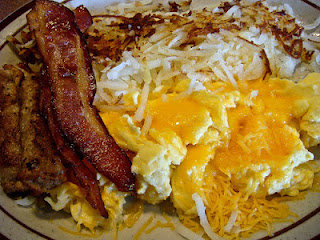
Posted on May 15, 2016 by
in Body, Diet, Guest Blog, Nutrition, Organic, Weight Loss, Whole Food
Leave a comment
Meet Dee- She needs shoes!
A few years ago, I introduced you to my dear friend Dee. She invited us on her weight loss journey and did quite a few posts regarding her story. I just wanted to repost a few of these because:
1. I miss Dee!!
2. I always love her posts and admire how real and down to earth she is! Hope you enjoy them as well.
Dee is a mom! Dee wants to lose weight. Dee believes we need to eat healthy. I love Dee. She has invited us to follow her weight loss journey with her because she can’t see her feet! Please follow her amazing posts with me! She is inspiring! And to Dee, thank you for admitting that you aren’t perfect and this isn’t an easy thing to do! We should all have that much integrity.
Dee writes:
Funny how people are ashamed to share their weight. I don’t mind telling people who I weigh 190 pounds. When I’m speaking to someone and the issue of health or weight comes up, I freely share my weight…the real number. I share my age too, 49. People are sometimes surprised that I’m 49, but no one has ever reacted surprisingly to the 50 extra pounds. I’m guessing it’s because if they are speaking to me in person, they can see the extra pounds…mostly around my middle. I don’t like this section of me but I’ve gotten used to it. I chose this photo, taken from my chin looking down to show you what I see when I look at my shoes. Get it? No shoes. I’d like to see my shoes and have started a new goal to get there. After years and years of dieting, I am a diet expert. Most overweight people are diet experts. The trick isn’t knowing what to do, it’s doing it. If you want to jump into the journey, I would love the company. It might not always be pretty, but it will always be real. 
Safe grilling!
Grilling is a great way to eliminate fats and oils while preparing meats and veggies. Plus it’s a fun way to stay outdoors to eat and cook. Disposable plates mean you stay out of the kitchen completely.
 FoodFacts.com would like to discuss grilling season.
FoodFacts.com would like to discuss grilling season.With grilling season just around the corner, the U.S. Food and Drug Administration (FDA) last month released a pamphlet with grilling tips for the safe preparation of foods.
E-coli and salmonella are two of the most well-known and common food-borne illnesses in existent, and both illnesses are often contracted through the incorrect preparation of foods. This is especially common in the summer, when grilling is a common means of cooking and the heat outside is high, resulting in a higher chance of bacteria growing within food. So how can you keep you and your family safe during this fun, but risky, time?
It all begins before you even begin cooking, with proper cleanup and preparation of your work area. Cleaning your food items is also a must, specifically fresh fruits and vegetables.
The means in which you transport your food is also important, and transporting foods in an organized manner could be beneficial. Keeping your cold foods cold, specifically in a cooler with the temperature at 40°F or below, is necessary for preventing bacteria growth. Keep the coolers closed, and don’t cross-contaminate foods such as poultry, seafood and raw meat.
What about the actual grilling process, though? How do you keep your foods safe?
When grilling, it is important to marinate your food safely – keep it in the refrigerator, rather than the counters or outside. Keep already grilled food hot until it is served. Also, and this is very important – cook food thoroughly. To find out proper cooking temperatures, please refer to the FDA link at the bottom of this blog. Finally, when cooking, keep utensils separate to prevent cross-contamination. It might be a good idea to wash utensils after each use to be extra safe.
So, folks, there you have it. Separation, refrigeration, and proper cooking temperatures are the basics.
With that said, we’re wishing you a happy and healthy grilling season from FoodFacts.com!Another note from Dee: if you use a liquid marinade, be sure to discard it after use, do not put it back on meat that’s been cooked. Remember, it was in close contact with the raw meat and should be treated that way. Here’s the FDA link: FDA.
Oxytocin and Bonding
Oxytocin hormone in our body
In most cases, people are much more intrigued with hormones that impact their physical well-being. But the matter of fact is that some of the hormones also influence the mental functions in our body. As dominant as brain is, it can’t cover all the functions and processes in our organism. Having that in mind, it needs to use hormones in order to transfer certain information so that the body can work properly. For example, cortisol and adrenalin are very important for our instincts and they give us instant surge of energy and warn us of danger. However, when it comes to social processes and our social interaction with other individuals, there is one dominant hormone that performs most of the functions.
Oxytocin is a hormone which is secreted in hypothalamus. Afterwards, it is released into our bloodstream and it gives us an elated sensation. It is often referred to as “bonding hormone”. To be honest, this is the best way to describe it because it influences all bonding processes and relationships which we form with other people. Besides its social component it also influences growth and healing.
When we talk about our social interaction with other individuals, it is worth mentioning that most of the process happens in first few second upon meeting another person. This is when our mind and hormones tell us whether a person is trustworthy. We make our impression based on first contact and initial talk. If we recognize certain similarities with a person, we usually befriend him or her. In this situation, cortisol warns us of danger, while oxytocin reduces potential anxiety which can be a product of such encounter. However, when we “decide” to make person our friend, oxytocin starts working within our body. Each contact made with a person deepens our bond, making us better friends.
At the same time, this hormone also influences bonding with opposite sex. This is what we usually refer to as “chemistry”. And we are not wrong when we say this. When we recognize certain likable traits in other person, usually similarities to our own persona, this is when oxytocin starts working. The hormone is also very important for our sexual life because it impacts erection and ejaculation. In most cases, when people have issues in marriage, this is due lack of connection between each other. It is recommendable for couples to use oxytocin sublingual drops from Oxytocin Factor in order to restore levels of oxytocin in blood.
Similarly to all our other social interaction, oxytocin impacts our behavior in a group as well as certain social traits like obedience and loyalty. It is discovered that people belonging to certain group are more likely to cheat and lie because oxytocin’s impact on body. Furthermore, as soon as the group has certain common goal, oxytocin works in order for the group to attain a goal. This was very important during history, especially during process of creation of certain tribes and nations. In all these cases oxytocin worked as a bridge that provided common ground for various people and various personas.



